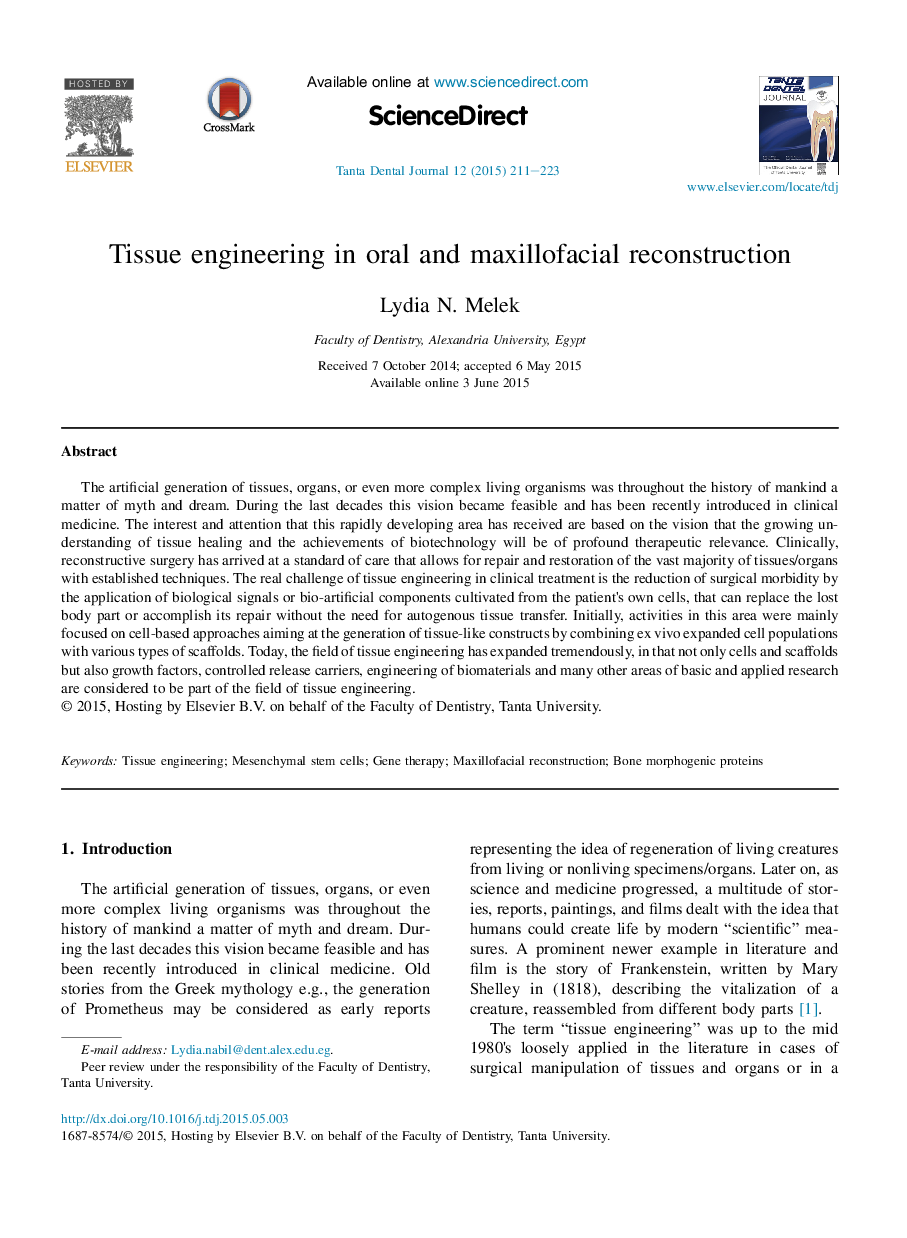| Article ID | Journal | Published Year | Pages | File Type |
|---|---|---|---|---|
| 3179637 | Tanta Dental Journal | 2015 | 13 Pages |
The artificial generation of tissues, organs, or even more complex living organisms was throughout the history of mankind a matter of myth and dream. During the last decades this vision became feasible and has been recently introduced in clinical medicine. The interest and attention that this rapidly developing area has received are based on the vision that the growing understanding of tissue healing and the achievements of biotechnology will be of profound therapeutic relevance. Clinically, reconstructive surgery has arrived at a standard of care that allows for repair and restoration of the vast majority of tissues/organs with established techniques. The real challenge of tissue engineering in clinical treatment is the reduction of surgical morbidity by the application of biological signals or bio-artificial components cultivated from the patient's own cells, that can replace the lost body part or accomplish its repair without the need for autogenous tissue transfer. Initially, activities in this area were mainly focused on cell-based approaches aiming at the generation of tissue-like constructs by combining ex vivo expanded cell populations with various types of scaffolds. Today, the field of tissue engineering has expanded tremendously, in that not only cells and scaffolds but also growth factors, controlled release carriers, engineering of biomaterials and many other areas of basic and applied research are considered to be part of the field of tissue engineering.
